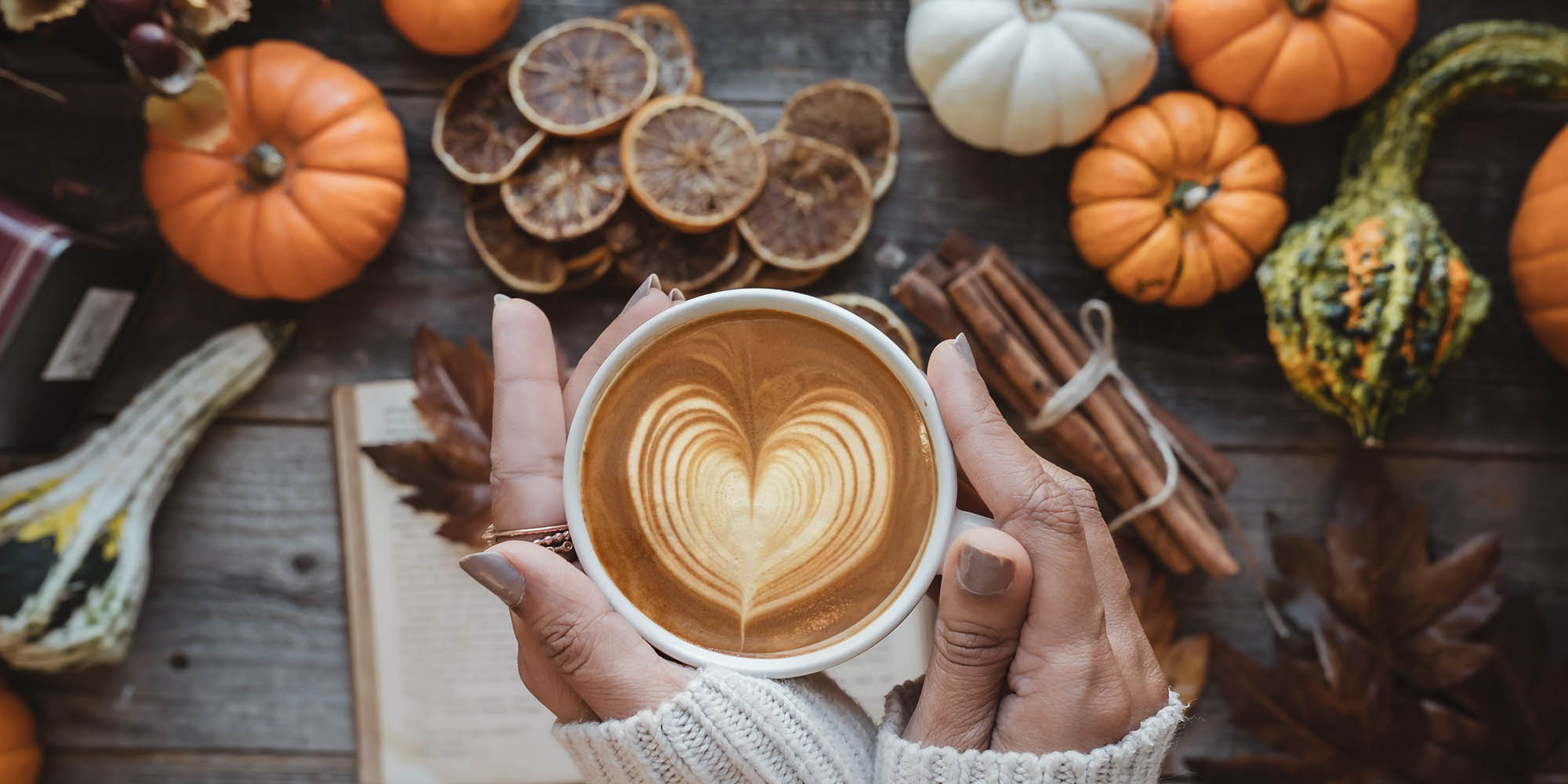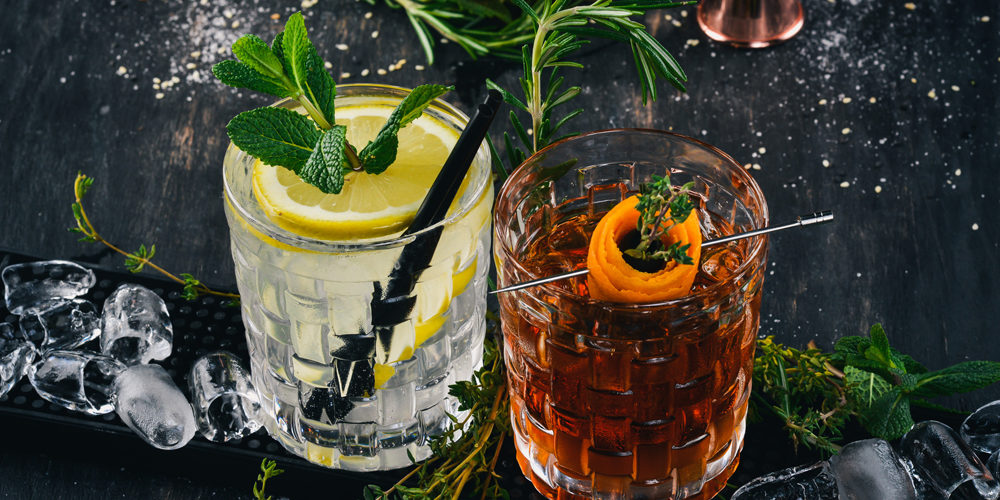When the leaves start to change and there’s a chill in the air, it can only mean one thing: pumpkin spice season is here. From lattes, to candles, to pumpkin beer, this iconic flavor has taken the world by storm. In fact, it has become a cultural phenomenon that continues to grow each year.
But what exactly is it about pumpkin spice that has captured our hearts and taste buds? Is it the warm and comforting aroma? The perfect blend of spices like cinnamon, nutmeg, and cloves? Or perhaps it’s the nostalgia and cozy feelings it evokes. (If you ask us, it’s all of the above.)
The rise of a phenomenon
Pumpkin spice season wasn’t always the cultural phenomenon it is today. In fact, it started off as a humble flavor enjoyed by a select few. The rise in popularity can be attributed to a combination of factors, including changing consumer preferences and strategic marketing efforts.
The history dates back to early American settlers who blended spices to enhance the flavor of pumpkin-based dishes. Over time, this traditional autumn flavor became associated with the changing seasons and the warmth and comfort of autumn.
Fast forward to the late 20th century, and pumpkin spice began to gain traction in the food and beverage industry. It started with the introduction of pumpkin spice lattes by Starbucks, which quickly became a seasonal favorite among consumers. This success sparked a trend, with other companies jumping on the bandwagon and introducing their own versions of the flavor.
A little bit of history
Going deeper into the history of pumpkin spice, the origins can actually be traced back to ancient times. Even back then the combination of spices like cinnamon, nutmeg, and cloves was used in various cuisines around the world.
In America, pumpkins were abundantly available during the autumn harvest. People began experimenting with different spices to enhance the flavor of pumpkin-based dishes. The combination of the above mentioned spices emerged as the quintessential pumpkin spice blend. They created a warm and aromatic flavor that became synonymous with autumn.
Over time, pumpkin spice became deeply ingrained in American culture, particularly during the autumn season. It became a staple in traditional desserts like pumpkin pie and pumpkin bread, as well as in beverages like lattes. The popularity of pumpkin spice continued to grow. Eventually it spread beyond the borders of the United States and becoming a global sensation.
Why do people love pumpkin spice?
The answer? A combination of sensory appeal, emotional connection, and nostalgia. (Gets us every time!)
One of the key reasons people are drawn to this spice is its distinct aroma. The warm and comforting scent of cinnamon, nutmeg, and cloves evokes feelings of coziness and nostalgia. It reminds us of crisp autumn days and holiday gatherings. The aroma alone can transport us to a place of comfort and happiness, making it a highly desirable flavor.
Additionally, the flavor profile of pumpkin spice is incredibly versatile. It can be used in a wide range of sweet and savory dishes, from baked goods to beverages to savory roasted vegetables. This versatility allows people to incorporate it into their favorite foods and beverages, further enhancing the appeal of the flavor.
The impact on the food and beverage industry
The rise of pumpkin season has had a significant impact on the food and beverage industry. It has created a demand for seasonal products and limited-time offerings, driving sales and customer engagement.
This success of the coffee shops and led to increased competition and innovation in the industry. Going beyond beverages, pumpkin spice has also influenced the creation of new products and flavors. From cookies to yogurt, companies have capitalized on the popularity of the flavor by incorporating it into a wide range of food and beverage offerings. This has created a sense of excitement and anticipation among consumers, who eagerly await the arrival of this season each year.
The psychology behind the seasonal marketing of pumpkin spice
The success of pumpkin season can be attributed, in part, to the clever marketing strategies employed by companies. The seasonal nature of pumpkin spice creates a sense of urgency and exclusivity, driving consumer demand and creating a sense of FOMO (fear of missing out).
By offering these products for a limited time only, companies create a sense of scarcity and anticipation. This scarcity mindset taps into the psychological concept of loss aversion, where people are more motivated by the fear of missing out on something than by the potential for gain. As a result, consumers are more likely to make a purchase in order to experience the limited-time flavor and avoid feeling left out.
In addition to scarcity, the marketing of pumpkin spice also plays on the emotions and nostalgia it invokes. The warm and cozy imagery associated with the season creates a sense of comfort and familiarity, appealing to consumers’ desire for comfort in uncertain times. This emotional connection to the flavor encourages repeat purchases and fosters brand loyalty.
Pumpkin spice recipes for Autumn
In addition to the wide array of products available in stores, many people enjoy creating their own pumpkin spice treats at home. The versatility makes it a popular ingredient in a variety of autumn-inspired recipes.
From classic pumpkin pie to pumpkin spice pancakes to pumpkin bread, there are countless ways to incorporate this beloved flavor into your autumn baking. The warm and aromatic spices pair perfectly with the natural sweetness of pumpkin, creating a harmonious, well-loved flavor combination.
The controversy surrounding pumpkin spice
Despite its overwhelming popularity, pumpkin spice season is not without its fair share of controversy. Some people argue that the flavor has become overhyped and overused, leading to flavor fatigue among consumers.
Critics argue that the ubiquity of the products has diluted its uniqueness and made it less special. They claim that companies are capitalizing on the trend by adding pumpkin spice flavoring to products that don’t necessarily benefit from it, resulting in a flood of mediocre offerings. (Our opinion is bring it on and let the people who want the products decide.)
Despite these criticisms, pumpkin spice continues to be a beloved flavor among many consumers. Its enduring popularity suggests that, for the majority of people, the appeal outweighs any controversy or fatigue.
Beyond food and beverages
While pumpkin spice is most commonly associated with food and beverages, its influence extends far beyond the culinary world. In recent years, it has made its way into a variety of non-food products, ranging from candles to beauty products to home decor.
Pumpkin spice-scented candles have become an autumn staple, filling homes with the warm and comforting aroma of the season. The scent can create a cozy and inviting atmosphere, making it a popular choice for those looking to enhance their autumn decor.
Beauty brands have also jumped on the bandwagon, releasing limited-edition products with pumpkin spice-inspired scents and flavors. From body lotions to lip balms to bath bombs, these products allow consumers to indulge in the sensory experience of pumpkin spice beyond the realm of food and beverages.
How to incorporate pumpkin spice into your business marketing strategy
If you’re a business owner looking to capitalize on the trend, there are several strategies you can employ to incorporate this beloved flavor into your marketing strategy.
First and foremost, consider creating limited-time pumpkin spice offerings. By introducing seasonal products or menu items, you can generate excitement and drive sales during the peak of the season. Whether you run a coffee shop, a bakery, or a retail store, offering pumpkin products can attract customers and create a sense of urgency to purchase. (Pumpkin spiced websites anyone? Just kidding.)
In addition to limited-time offerings, consider leveraging the power of social media to promote your pumpkin products. Share mouthwatering photos and videos of your creations, and encourage your followers to share their own experiences using a branded hashtag. This can help create a sense of community and generate buzz around your brand.
Finally, don’t forget about the power of storytelling. Storytelling can help create an emotional connection with your customers and differentiate your brand from competitors. Sharing a family recipe passed down through generations or a unique twist on a classic flavor can be a very powerful marketing tool.
Wrapping it up
So as the leaves change and the air turns crisp, embrace the flavors of autumn and indulge in the craze. Whether you’re sipping a pumpkin spice latte, enjoying a pint of pumpkin ale, or simply enjoying the aroma of a scented candle, let the flavors transport you to a place of comfort, warmth, and autumnal bliss.
Pumpkin spice recipe inspiration to get you started
- Pumpkin Spice Latte: Skip the coffee shop and make your own at home. Combine espresso or strong coffee with steamed milk, pumpkin puree, pumpkin spice, and a touch of sweetener. Top with whipped cream and a sprinkle of cinnamon for the perfect autumn beverage.
- Pumpkin Spice Muffins: Start your morning off right with a batch of yummy muffins. Packed with pumpkin puree, spices, and a hint of vanilla, they make great treats. Enjoy them plain or add a streusel topping for an extra touch of sweetness.
- Spiced Pumpkin Soup: Warm up on a chilly autumn evening with a bowl of soup. This savory dish combines roasted pumpkin, spices, and vegetable broth for a comforting and nutritious meal. Serve with crusty bread for a complete autumn experience.



![Happy Hour: Pumpkin Beer! [Updated 2023] shandy](https://www.phoenixroadcreative.com/wp-content/uploads/2019/07/light_beer_shandy.jpg)












